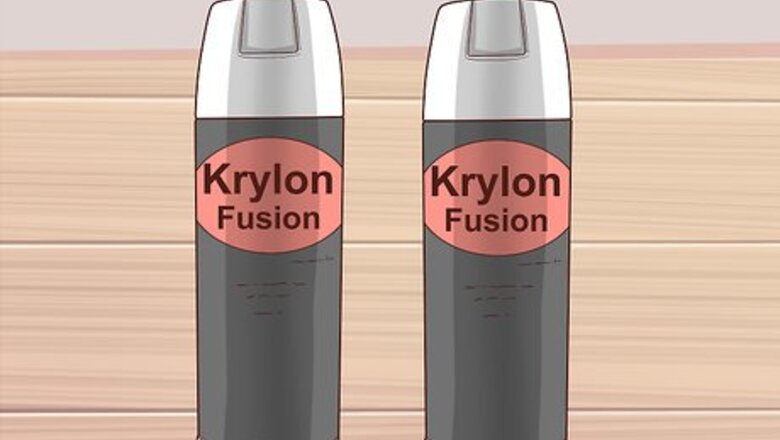
views
Setting Up for Success

Purchase the right kind of paint. Not all types of paint will look as good or last as long on your Nerf gun. One brand that historically works great is Krylon Fusion (for plastic), as the paint bonds to the plastic on the Nerf gun and makes the paint job last longer. Some enthusiasts prefer other spray paint brands, or vinyl dye sprays, which are available at auto parts stores.
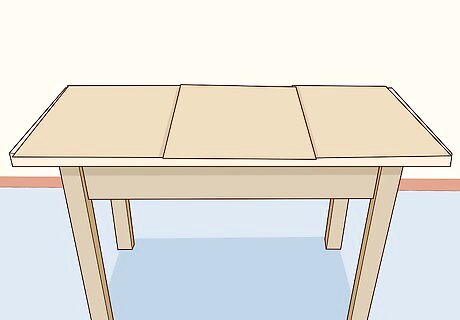
Select a good work area. Sanding and spray painting a Nerf gun — or anything else, for that matter — is not they type of project that you should try to tackle on your dining room table. Plan ahead both for safety and to contain the mess you’ll make. Work in a well-ventilated area, but in low-wind conditions. Put down an ample amount of paper, cardboard, or other protective material on your workspace. Follow the preparation and application instructions on the spray paint can. If you're painting outside, be sure to work in a shaded area. If you paint in direct sunlight, the paint might flash dry instead of drying properly.

Clean the plastic surface. Spray paint adheres better and lasts longer on a clean surface. Some mild soap and a thorough rinse (and dry) will do the trick. However, the best way to prepare plastic for painting will depend on whether it's old or new: an ammonia-based cleaner (such as a window spray) will better prepare worn plastics for painting, while paint thinner works best for brand new plastic items.
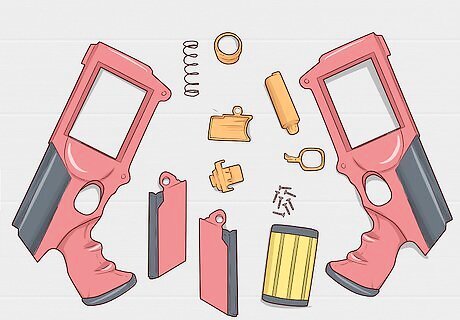
Disassemble the toy. Take apart your Nerf gun using a screwdriver. You only need to take off the panels that you feel need painting. Be cautious, because many Nerf guns have pieces under tension, and often springs, and these can escape at high speed once you open the gun. Take a photo of the internal layout of the gun before removing any pieces, so you'll have a guide for reassembly later. You can spray paint without disassembling if desired, but it’s easier to get complete coverage if you take the toy apart.
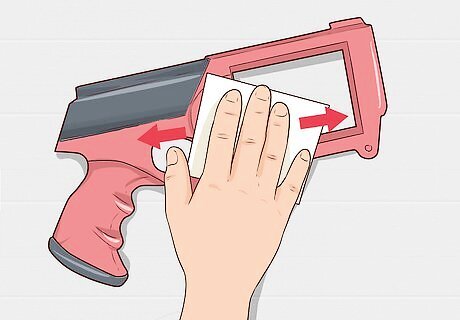
Sand the panels. A good sanding job will allow the paint job to last longer, so take your time on this step. Sanding will create more surface area for the paint to bond to. Sand each panel until it feels slightly rough. Use any general purpose sandpaper for the job. Wipe away dust and debris with a tack cloth before proceeding. Or, wash the toy again with a mild soap and water, and rinse and dry it thoroughly. Whether or not you sand, be sure to wash every piece you intend to paint in order to remove mold-release chemicals that can interfere with paint adhesion.
Painting the Nerf Gun
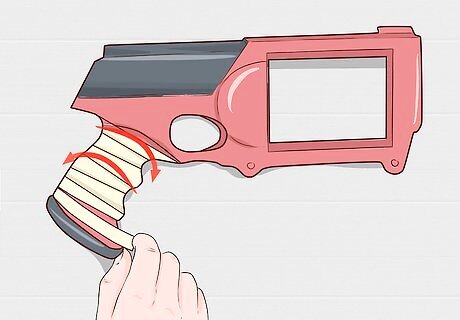
Tape any panels or parts that you want to remain partially unpainted. It would be a good idea to cover the orange tip, so it will be clear it is a toy. Apply painter's tape (masking and duct tape will work too, but they usually leave a sticky residue) so that the spray paint doesn't cover these sections. For masking fine details, you can trim out shapes from the tape with a sharp hobby knife. You can also tape over the black base coat you’ll apply next, after it has dried thoroughly, if you want certain sections to remain black. If you find that your finish paint color is leaking under your painter's tape, applying another layer of your base coat over the tape before applying your accent color can help. Look online for examples of high-quality Nerf gun paint jobs. You may be inspired!
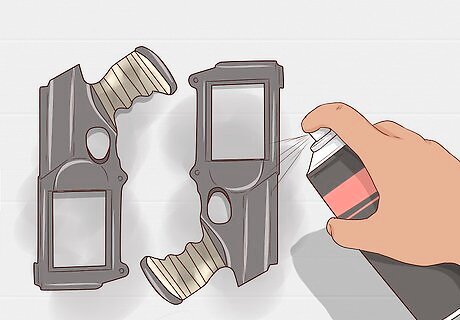
Apply the base coats of paint. Apply two or more light coats of black spray paint. This process is called "priming." Priming makes the other finishing colors stick out more than they would if applied just by themselves. This is especially helpful if your Nerf gun has bold contrasting colors, like blue and orange or red and yellow. Start and end your spray pointed away from your target to avoid splatters.

Let the black paint dry. Wait at least ten minutes. It's important that the first layer of paint is dry so that new colors don't blend with the black. It's best not to let the paint dry in direct sunlight. Refer to the information on your paint's can for re-coat times.

Add your finishing color(s). Take the color(s) of spray paint you want and spray several light coats over the black base coat (and any taped areas). Let the paint dry for ten minutes or more between coats. Remove any painter’s tape after applying the final coat, either before or after the paint has fully dried. If you mix types/brands of paint, test their compatibility on some scrap plastic or a part of the gun that won't show once assembled.
Finishing the Job
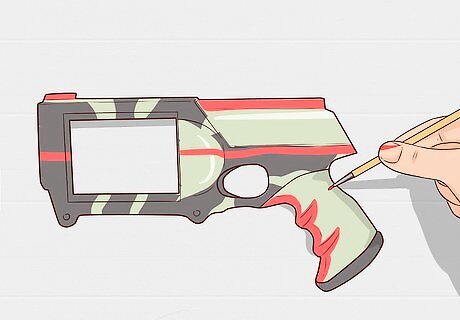
Add touch-up detailing if desired. If you want to add any fine details or touch up some hard-to-reach spots, use acrylic paints and fine-tipped acrylic brushes. Allow the paint to dry thoroughly between coats. Be extra cautious painting parts that see a lot of movement, like triggers and slides. Some of them move in places with very little room to maneuver, and even the increased thickness added by coats of paint can affect performance.
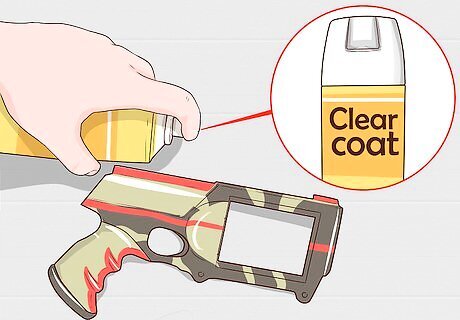
Apply a clear coat spray. This will give your new paint job a longer life, especially on areas prone to wear like handles and triggers. The application process will be very similar to applying the spray paint, but follow the instructions on the can. Let the clear coat dry thoroughly before reassembling the toy.

Reassemble your Nerf gun. After all the painted parts are completely dry, screw them back together and admire your work. Your Nerf gun paint job is now complete! Refer to the photos you should have taken during disassembly if you need a refresher.




















Comments
0 comment